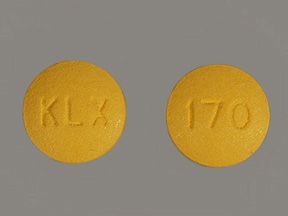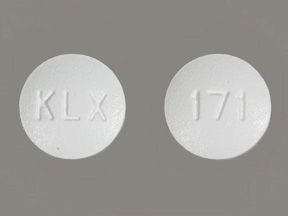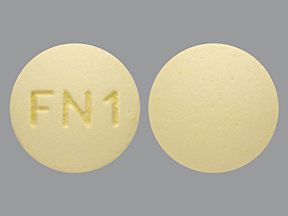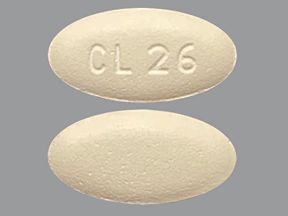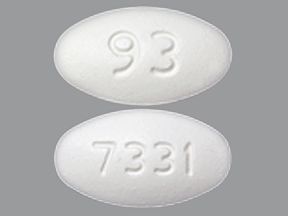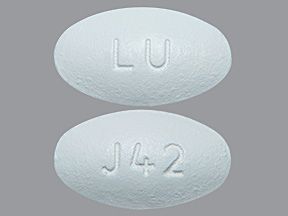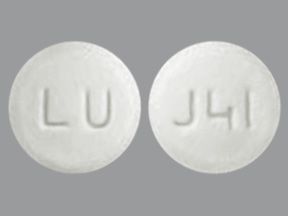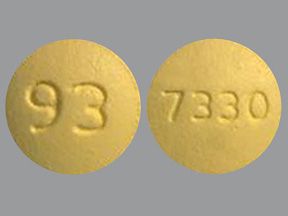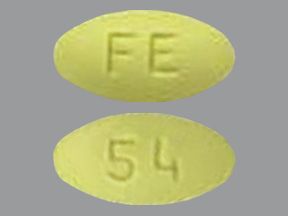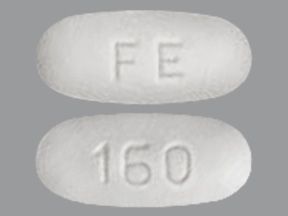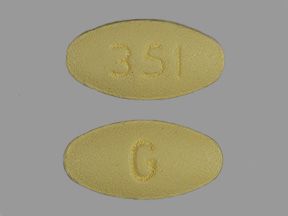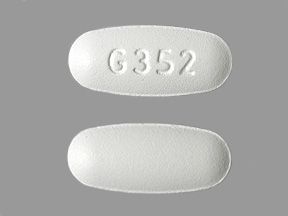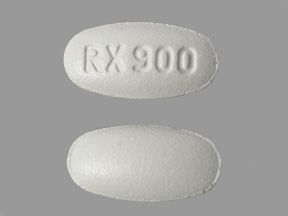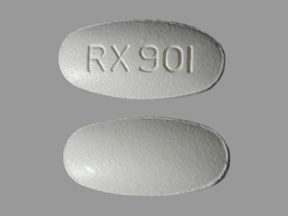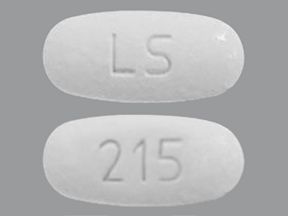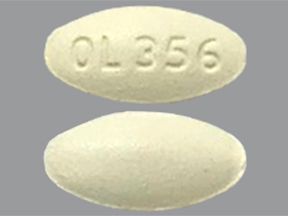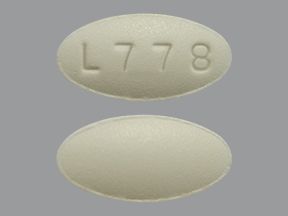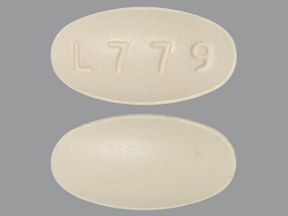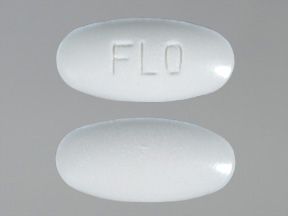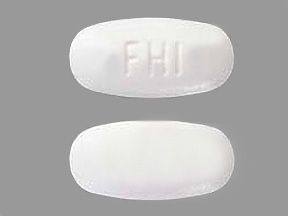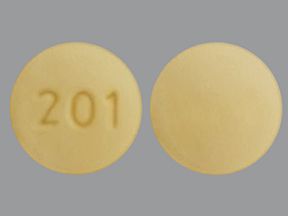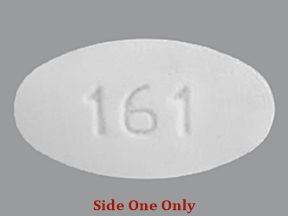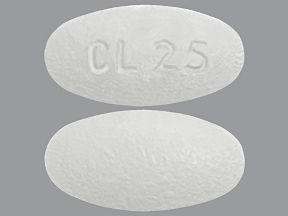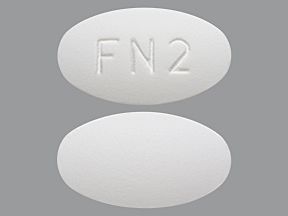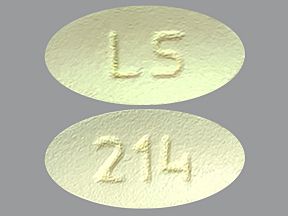Fenofibrate is a generic prescription drug that’s used to treat high cholesterol and high triglyceride levels. Fenofibrate comes as an oral tablet that you swallow.
Specifically, fenofibrate oral tablet is used to treat cholesterol problems in adults. To learn more about fenofibrate oral tablet’s uses, see the “What is fenofibrate used for?” section.
Fenofibrate oral tablet is a generic medication. It’s not available in a brand-name version.
Fenofibrate is also available as an oral capsule that you swallow. But that form is not discussed in this article. For information about the oral capsule form of fenofibrate, talk with your doctor or pharmacist.
Fenofibrate is used to improve cholesterol and triglyceride levels in three types of lipid problems in adults:
- Mixed dyslipidemia: high levels of LDL (bad) cholesterol and triglycerides, and low levels of HDL (good) cholesterol
- Severe hypertriglyceridemia: very high levels of triglycerides
- Primary hypercholesterolemia: very high levels of LDL cholesterol
Fenofibrate helps lower high levels of harmful cholesterol, mainly triglycerides. It also helps increase levels of HDL (good) cholesterol.
How it works
Fenofibrate belongs to a class of drugs called fibric acid derivatives. A class of drugs is a group of medications that work in a similar way. These drugs are often used to treat similar conditions.
Fenofibrate works by increasing the breakdown and removal of bad cholesterol from your body. This helps reduce the risk of cholesterol building up in your blood vessels and causing serious health problems, such as heart attack or stroke.
Like most drugs, fenofibrate may cause mild to serious side effects. The lists below describe some of the more common side effects that fenofibrate oral tablet may cause. These lists don’t include all possible side effects.
Keep in mind that side effects of a drug can depend on:
- your age
- other health conditions you have
- other medications you take
Your doctor or pharmacist can tell you more about the potential side effects of fenofibrate. They can also suggest ways to help reduce side effects.
Mild side effects
Here’s a list of some of the mild side effects that fenofibrate can cause. To learn about other mild side effects, talk with your doctor or pharmacist, or read fenofibrate oral tablet’s prescribing information.
Mild side effects of fenofibrate that have been reported include:
- headache
- back pain
- nausea
- constipation
- stuffy or runny nose
- stomach pain
Mild side effects of many drugs may go away within a few days to a couple of weeks. But if they become bothersome, talk with your doctor or pharmacist.
Serious side effects
Call your doctor right away if you have serious side effects. Call 911 if your symptoms feel life threatening or if you think you’re having a medical emergency. Serious side effects and their symptoms can include the following:
- Liver problems. Symptoms can include:
- yellowing of your skin or the whites of your eyes
- dark-colored urine
- pain in the abdomen
- decreased appetite
- unexplained or unusual weakness
- Myopathy (muscle problems). Symptoms can include:
- muscle cramps or spasms
- stiffness
- muscle pain
- fatigue
- exercise intolerance
- skin rashes
- Rhabdomyolysis (muscle breakdown). Symptoms can include:
Allergic reactionFor some people, fenofibrate can cause an allergic reaction.
In general, symptoms of allergic reaction can be mild or serious.
What might help
If you have mild symptoms of an allergic reaction, such as a mild rash, call your doctor right away. They may suggest a treatment to manage your symptoms and can determine whether you should keep taking fenofibrate.
If you have symptoms of a severe allergic reaction, such as swelling or trouble breathing, call 911 or your local emergency number right away. These symptoms could be life threatening and require immediate medical care.
If your doctor confirms you’ve had a serious allergic reaction to fenofibrate, they may have you switch to a different treatment.
Your doctor will recommend the dosage of fenofibrate that’s right for you. Below are commonly used dosages, but always take the dosage your doctor prescribes.
Form and strengths
Fenofibrate oral tablet is available in the following strengths:
- 40 milligrams (mg)
- 48 mg
- 54 mg
- 120 mg
- 145 mg
- 160 mg
Recommended dosages
Your doctor will recommend the dosage of fenofibrate oral tablet that’s right for you. Below are commonly used dosages, but the dosage you receive will be determined by your doctor.
Fenofibrate oral tablet is approved for use in adults (ages 18 years and older) only.
Dosage for primary hypercholesterolemia or mixed dyslipidemia
The initial dose of fenofibrate oral tablet for these conditions is 120 to 160 mg once daily.
Dosage for severe hypertriglyceridemia
The starting dose of fenofibrate oral tablet for this condition is 40 to 120 mg per day. Dosage may be adjusted based on the results of lipid blood tests performed at 4 to 8-week intervals. The maximum dose is 160 mg once daily.
Special dosage considerations
For older adults: The kidneys of older adults (ages 65 years and older) may not work as well as they used to. This can cause your body to process drugs, including fenofibrate, more slowly. As a result, a higher amount of the drug may stay in your body for a longer time. This increases your risk of side effects.
Your doctor may start you on a lowered dosage or a different dosing schedule if you’re age 65 years or older. This can help keep levels of this drug from building up too much in your body.
For people with kidney disease: If you have mild kidney disease, you may need a lower dose of fenofibrate.
How to take it
Your doctor will explain how you should take fenofibrate. They’ll also explain how much to take and how often. Be sure to follow your doctor’s instructions.
Questions about taking fenofibrate
Below are some common questions about taking fenofibrate oral tablet.
- Can fenofibrate be chewed, crushed, or split? No, you should not chew, crush, or split fenofibrate tablets. You should swallow them whole. If you have trouble doing so, read these tips on how to swallow pills, or ask your doctor or pharmacist for advice.
- Should I take fenofibrate with food? Yes, fenofibrate oral tablets should be taken with food for the best absorption of the drug in the body.
- Is there a best time of day to take fenofibrate? Fenofibrate can be taken at any time of day, but it’s best to take it around the same time each day with a meal. This helps keep a steady level of the drug in your body, which helps fenofibrate work effectively.
- What if I miss a dose of fenofibrate? If you miss a dose of fenofibrate, take it as soon as you remember. But if it’s almost time to take your next dose, skip the missed dose and take the next dose at its usual time. Do not take two doses at once to make up for a missed dose. Doing so could raise your risk of side effects.
- Will I need to take fenofibrate long term? Yes, fenofibrate is typically used as a long-term treatment. If you and your doctor determine that it’s safe and effective for your condition, you’ll likely take it long term.
- How long does fenofibrate take to work? Fenofibrate begins to work after you take your first dose. But you likely won’t feel the drug working in your body. Your doctor will order tests throughout your treatment to check whether fenofibrate is working to treat your condition.
Overdose
Do not take more fenofibrate than your doctor prescribes, as this can lead to harmful effects.
What to do in case you take too much fenofibrate
Call your doctor if you think you’ve taken too much fenofibrate. You can also call 800-222-1222 to reach America’s Poison Centers or use its online resource. But if you have severe symptoms, immediately call 911 or your local emergency number. Or go to the nearest emergency room.
Whether you have health insurance or not, cost may be a factor when you’re considering fenofibrate. What you’ll pay for fenofibrate oral tablet may depend on several things, such as your treatment plan and the pharmacy you use.
Here are a few things to consider regarding cost:
- Cost information and savings coupons: You can visit Optum Perks to get price estimates of what you’d pay for fenofibrate oral tablet. See the coupon options below. (Note: Optum Perks coupons cannot be used with any insurance copays or benefits.)
- Savings program: If you have questions about how to pay for your prescription, talk with your doctor or pharmacist.
Learn more about saving on your prescriptions.
Below is important information you should consider before taking fenofibrate.
Interactions
Taking a drug with certain other medications, foods, and other things can affect how the drug works. These effects are called interactions.
Fenofibrate oral tablet can interact with several other medications. Different interactions can cause different effects. For instance, some can interfere with how well a drug works, while others can cause increased side effects.
Below is a list of medications that can interact with fenofibrate. This list does not contain all drugs that may interact with fenofibrate. If you have questions about drug interactions that may affect you, ask your doctor or pharmacist.
If you have questions about drug interactions that may affect you, ask your doctor or pharmacist.
| Drug group or drug name | Drug examples | Possible interaction |
|---|---|---|
| certain cholesterol drugs called bile acid sequestrants | • cholestyramine • colesevelam • colestipol | makes it harder for your body to absorb fenofibrate |
| statin drugs | • atorvastatin • fluvastatin • lovastatin • pitavastatin • pravastatin • rosuvastatin • simvastatin | increases the risk of rhabdomyolysis |
| certain diabetes drugs called sulfonylureas | • glimepiride • glipizide • glyburide | increases the risk of low blood sugar |
| certain immunosuppressant drugs | • cyclosporine • tacrolimus | increases the risk of side effects from fenofibrate |
| warfarin (used to thin the blood) | increases the risk of bleeding | |
| colchicine (used to treat gout) | increases the risk of muscle pain |
Fenofibrate and alcohol
Alcohol isn’t known to interact with fenofibrate. But consuming alcohol can make your cholesterol problems worse. Because of this, your doctor may recommend that you limit the amount of alcohol you drink.
Pregnancy and breastfeeding
It’s not known whether it’s safe to take fenofibrate during pregnancy. If you’re pregnant or breastfeeding, talk with your doctor before starting fenofibrate treatment.
There’s no available information on the presence of fenofibrate in human milk, the effects of the drug on breastfed infants, or the effects of fenofibrate on human milk production. But due to possible risks fenofibrate could pose to infants, the drug’s prescribing information says you should not breastfeed during treatment with fenofibrate tablets and for 5 days after the final dose.
Fenofibrate can sometimes cause harmful effects in people who have certain conditions. This is known as a drug-condition interaction. Other factors may also affect whether fenofibrate is a good treatment option for you.
Talk with your doctor about your health history before you take fenofibrate. Be sure to tell them if any of the following factors apply to you:
Liver disease: Fenofibrate can cause liver problems, which could lead to liver failure. Let your doctor know if you have a history of liver disease. Your doctor can tell you if fenofibrate is safe for you. If you have active liver disease, you should not take fenofibrate.
Gallbladder disease: Fenofibrate may cause gallstones. Fenofibrate treatment may be discontinued if gallstones are found.
Kidney disease: Fenofibrate may cause abnormal results from tests of kidney function. These changes are typically temporary and not harmful. To be safe, your doctor may monitor your kidney function more often. If you have severe kidney disease, you should not take fenofibrate.
Severe allergic reactions: Fenofibrate can cause severe allergic reactions. These can include anaphylaxis and angioedema (swelling), which can be life threatening.
Some severe allergic reactions can occur days or weeks after starting fenofibrate. Examples include:
Disclaimer: Healthline has made every effort to make certain that all information is factually correct, comprehensive, and up-to-date. However, this article should not be used as a substitute for the knowledge and expertise of a licensed healthcare professional. You should always consult your doctor or other healthcare professional before taking any medication. The drug information contained herein is subject to change and is not intended to cover all possible uses, directions, precautions, warnings, drug interactions, allergic reactions, or adverse effects. The absence of warnings or other information for a given drug does not indicate that the drug or drug combination is safe, effective, or appropriate for all patients or all specific uses.





